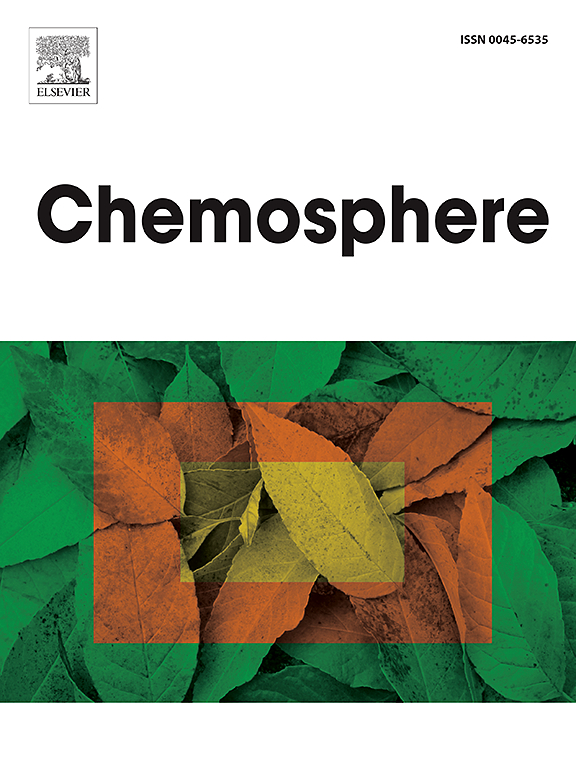Towards a better knowledge of U(VI) speciation in weakly alkaline solution through an in-depth study of U(VI) intrinsic colloids
IF 8.1
2区 环境科学与生态学
Q1 ENVIRONMENTAL SCIENCES
引用次数: 0
Abstract
The formation of U(VI) intrinsic colloids has a non-negligible impact on the dissemination of actinides in the environment. It is therefore essential to better identify their nature, formation conditions, and stability domains. These specific points are especially important since the behavior of these elements in environment is generally estimated by geochemical transport modeling. This modeling relies on the accurate prediction of their speciation in various situations based on thermodynamic databases that have to be continuously updated. In this work, we identified and characterized the U(VI) intrinsic colloids that grow in model solutions having simplified composition that consists of NaCl and NaCl with Na2SiO3 electrolytes at pH comprised between 7 and 10. Using a simple, reliable and systematic method based on geochemical simulations, elemental analyses by ICP-AES and in situ Small and Wide Angle X-ray Scattering characterizations, several characteristics of U(VI) colloids such as their sizes, volumes, concentration and formula were determined and used to calculate the distribution ratio of U(VI) between intrinsic colloids and solution. This distribution ratio is crucial to enhance predictive geochemical calculation, especially to predict the fraction of U(VI) present as colloids that may migrate into natural waters.

通过对U(VI)固有胶体的深入研究,更好地了解弱碱性溶液中U(VI)的形态。
U(VI)本征胶体的形成对锕系元素在环境中的扩散具有不可忽视的影响。因此,有必要更好地识别它们的性质、地层条件和稳定域。这些特定的点尤其重要,因为这些元素在环境中的行为通常是通过地球化学输运模拟来估计的。这种建模依赖于基于必须不断更新的热力学数据库对它们在各种情况下的物种形成的准确预测。在这项工作中,我们鉴定并表征了在模型溶液中生长的U(VI)本征胶体,模型溶液具有简化的组成,由NaCl和NaCl组成,pH值为7到10之间的Na2SiO3电解质。利用地球化学模拟、ICP-AES元素分析和原位小角和广角x射线散射表征等方法,测定了U(VI)胶体的大小、体积、浓度和配方等特征,并计算了U(VI)在本征胶体与溶液之间的分布比。该分布比对于提高预测地球化学计算,特别是预测以胶体形式存在的U(VI)的比例至关重要,这些胶体可能会迁移到自然水体中。
本文章由计算机程序翻译,如有差异,请以英文原文为准。
求助全文
约1分钟内获得全文
求助全文
来源期刊

Chemosphere
环境科学-环境科学
CiteScore
15.80
自引率
8.00%
发文量
4975
审稿时长
3.4 months
期刊介绍:
Chemosphere, being an international multidisciplinary journal, is dedicated to publishing original communications and review articles on chemicals in the environment. The scope covers a wide range of topics, including the identification, quantification, behavior, fate, toxicology, treatment, and remediation of chemicals in the bio-, hydro-, litho-, and atmosphere, ensuring the broad dissemination of research in this field.
 求助内容:
求助内容: 应助结果提醒方式:
应助结果提醒方式:


